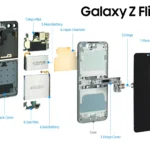The Wi-Fi Alliance introduced Wi-Fi 7 when everyone was preoccupied with gradually implementing Wi-Fi 6 and Wi-Fi 6E! It’s the newest and greatest thing in wireless data transfer, and it may finally put an end to the bothersome cords. Describe Wi-Fi 7. What distinguishes it from Wi-Fi 6 and Wi-Fi 6E? What advantages does it offer? When will Wi-Fi 7 be released, and what is required to receive it? All good questions, which we will attempt to answer in the following sentences.
Explain Wi-Fi 7
The seventh generation of wireless data transmission protocols, or Wi-Fi 7, provides significant improvements and advantages over its predecessor. It has substantially reduced latency, is quicker, and can send data to several devices at once. Let’s examine some numbers in detail.
Advantages of Wi-Fi 7 over Wi-Fi 6 and Wi-Fi 5
Transfer rates come first. As our files get more and bigger, we require ever-faster data transfer speeds. In order to provide up to 96 Gbps, Wi-Fi 7 uses three frequencies: 2.4 GHz, 5 GHz, and 6 GHz, together with a bigger channel size and modulation. A table with the specific changes is provided below.
The 16×16 MU-MIMO technology, which raises the number of spatial channels to 16, is another significant benefit. Put simply, Wi-Fi 7 has the capacity to send data to 16 devices at once.
Not to mention, Wi-Fi 7 employs many channels for data transfers to a single device. Because the standard makes use of all three frequencies—2.4 GHz, 5 GHz, and 6 GHz—it has decreased latency—100 times lower than Wi-Fi 6—better stability, and more dependability.
Applications for WiFi 7
In practical terms, what does all that mean? Wi-Fi 7 is going to create new opportunities in every field that uses wireless data transport. AR/VR is one instance of this. In order to transmit data between the processing unit (which might be off the headset, conserving weight and improving comfort levels) and the headset, these headsets require a large amount of data.
You may stream 4K and 8K video data without any lag or jitter with the aid of Wi-Fi 7. In the long run, the decreased latency will help the mobile gaming business by enabling gamers to play competitively via wireless networks.
All of your smart home appliances and devices will operate far more quickly and dependably with a Wi-Fi 7 router. Consider smart thermostats, TVs, speakers, and cameras—all of which have adequate bandwidth and speed to provide optimal performance.
What is required to enable Wi-Fi 7?
To make use of all the advantages of the standard, you’ll need a Wi-Fi 7 router, and any additional devices that connect to it also need to support Wi-Fi 7. Don’t worry, though; Wi-Fi 7 routers are now available in stores and, even though not many devices currently support the standard, they are backwards compatible, so you can use them with any Wi-Fi 6 or Wi-Fi 5 device.

Being future-proof is a terrific idea because many devices, including game consoles, computers, and smartphones will swiftly adopt this standard. A few respectable Wi-Fi 7 routers, ranging from the most expensive heavy artillery to the more affordable versions, are listed below.
Is Wi-Fi 7 really necessary?
One more excellent query. As usual, the response is “It depends.” Most likely not if you currently have a Wi-Fi 6 router and don’t want extremely high bandwidth or 16 distinct connections to different devices.
On the other hand, you will gain a lot by moving to Wi-Fi 7 if your home is smart or if your setup is wireless, meaning that you watch 4K streams, play competitively on your laptop, use multiple smartphones that are connected to your home’s Wi-Fi, and have numerous devices that need a fast wireless connection.













